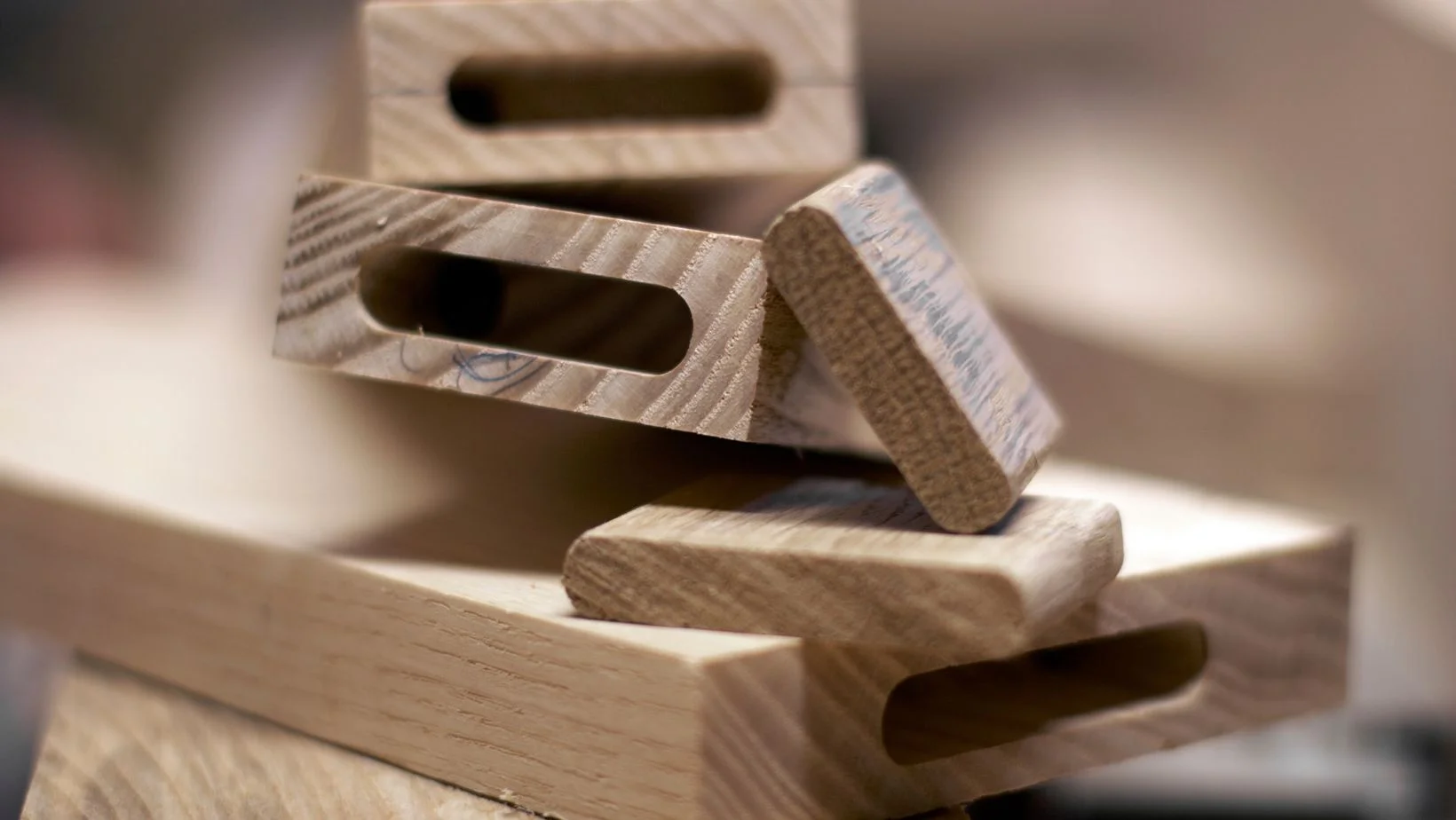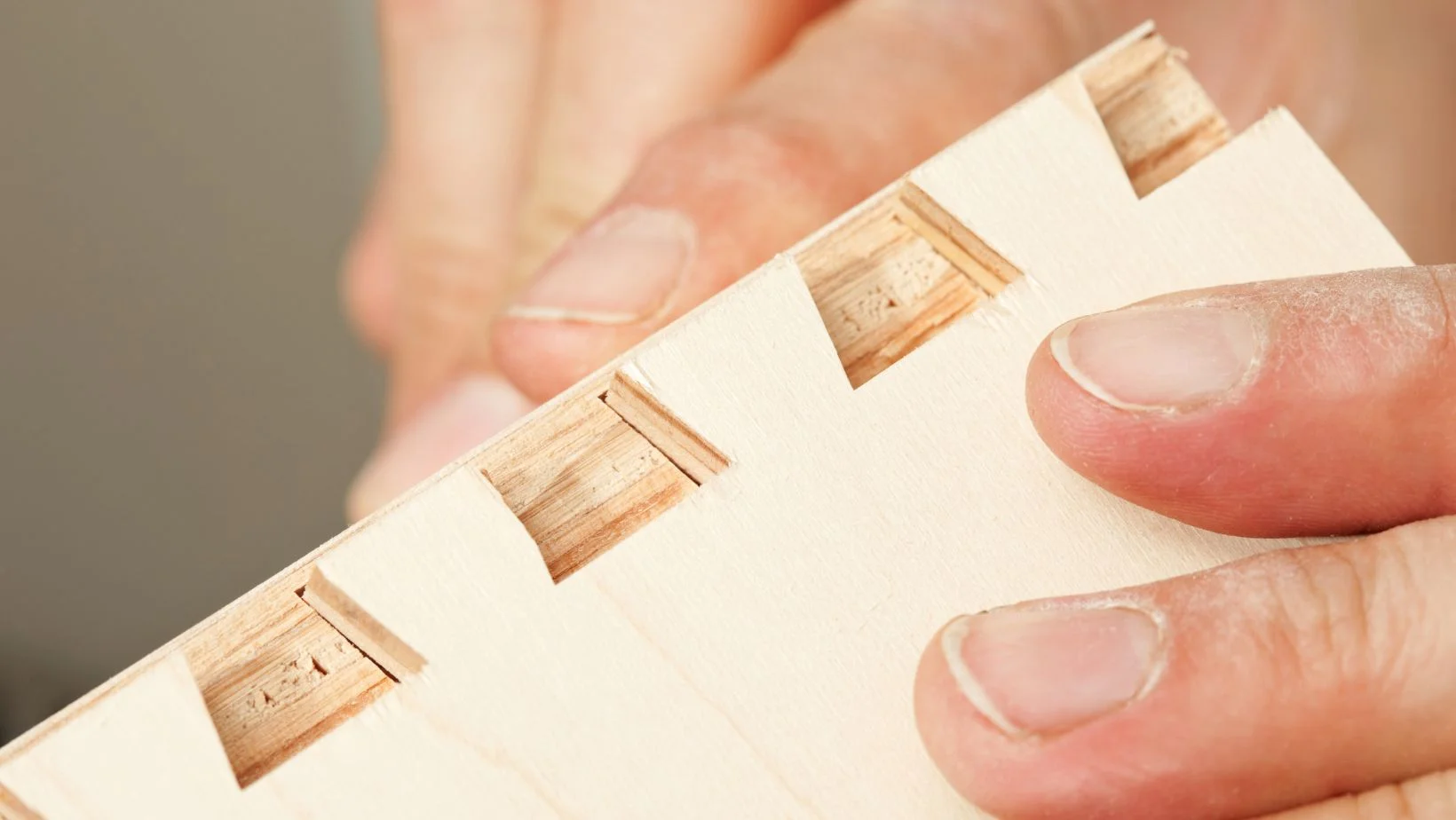Wood joints are a crucial aspect of woodworking as they influence the strength, durability, and aesthetic of the final piece. Whether you’re crafting furniture, cabinetry, or decorative items, understanding different types of wood joinery can significantly impact the quality and functionality of your work. In this blog, we will explore various wood joinery techniques and their applications, helping you choose the right method for your projects.
Butt Joint
Butt joints, the simplest type of wood joinery, occur when two pieces of wood are joined together without any shaping. Due to its limited adhesive surface area, a butt joint is inherently weak unless reinforced with additional fasteners like nails or screws. This basic connection is commonly used in structural framing and other applications that benefit from extra fasteners for added strength.
Dowel Joint
A dowel joint is an improved version of the butt joint, utilizing hidden dowels for added strength. This joint is created by drilling matching holes in two pieces of wood and inserting wooden dowels, typically with glue. The dowels act as mechanical fasteners, enhancing the bond and helping to align the components accurately. Dowel joints are favored by furniture makers and are commonly used in the construction of mirrors, picture frames, and various other furniture pieces.
Biscuit Joint
A biscuit joint is similar to a dowel joint but uses a concealed element to enhance the strength of the joint and provide additional surface area for gluing. In this case, the concealed element is a small, oval-shaped piece of compressed beechwood known as a biscuit. The biscuit is coated with adhesive and inserted into matching slots cut into the opposing pieces of wood. The moisture in the glue causes the biscuit to expand, creating a stronger bond. This type of joint is widely used in furniture construction, particularly for joining pieces of wood to form tabletops.
Mortise-and-Tenon Joint
A mortise-and-tenon joint is formed when a tenon is inserted into a mortise. A mortise is a hollowed-out section of material in one piece of wood, while a tenon is a protruding section cut at the end of another piece. This robust and reliable joint is widely used in furniture manufacturing to attach components like bed frames and table legs. It is also commonly found in traditional barn and house framing due to its strength and durability.
Finger Joint
A finger joint, also known as a box joint, is created by cutting a series of equally spaced square notches into one piece of wood and corresponding notches into another piece. These notches, or “fingers,” interlock when the two pieces are joined together. When reinforced with glue, finger joints are exceptionally strong due to the large adhesive surface area. This simple yet effective connection is ideal for constructing boxes, drawers, and other similar structures.
Half-Lap Joint
A half-lap joint is created by removing half the thickness of two pieces of wood at their ends, and then overlapping them so that they fit flush together. While this technique reduces the strength of the individual pieces, the joint itself provides considerable stability, especially when placed in the middle of the board. However, half-lap joints located at the end of a board, known as end laps, are significantly weaker. This type of joint is commonly used in structural framing and furniture construction due to its simplicity and effectiveness.
Bridle Joint
A bridle joint is a robust alternative to a lap joint, serving many of the same functions but with increased strength. Instead of two overlapping sections, a bridle joint features a tenon on one piece of wood and an open-ended mortise on the other. This design provides multiple gluing surfaces, making it much stronger than the single gluing surface of a half-lap joint. Bridle joints are frequently used in the construction of tables, desks, and benches due to their enhanced durability and stability.
Tongue-and-Groove Joint
A tongue-and-groove joint is a popular choice for flooring and wood paneling due to its straightforward and effective design. One edge of a board features a protruding tongue, while the opposite edge has a corresponding groove. When the boards are fitted together, the tongue locks into the groove, creating a tight, secure connection that is smooth to the touch.
Pocket Joint
A pocket joint is a type of joinery that involves creating a pocket hole and drilling a pilot hole between two boards before securing them with screws. This process requires precise measurements, often achieved using a specialized jig. Pocket joints are ideal for applications like constructing face frames for cabinets and other projects where moderate strength and concealed fastening are desired.
Dovetail Joint
Dovetail joints are a more intricate, self-locking version of finger joints, utilizing tapered slots and tenons that interlock. The tapered shape not only creates an attractive appearance on both sides of the joint but also provides exceptional strength due to its interlocking design. This popular connection is ideal for regular furniture construction, as well as for drawers and boxes that require greater strength and durability than standard joints can offer.
Choosing the right type of wood joinery is essential for the success of your woodworking projects. Each type of joint offers unique strengths and aesthetic qualities, making them suitable for different projects. Whether you need the strength of a mortise and tenon joint for a chair or the decorative appeal of dovetail joints for a drawer, understanding these joinery techniques will enhance your craftsmanship and the durability of your creations.











